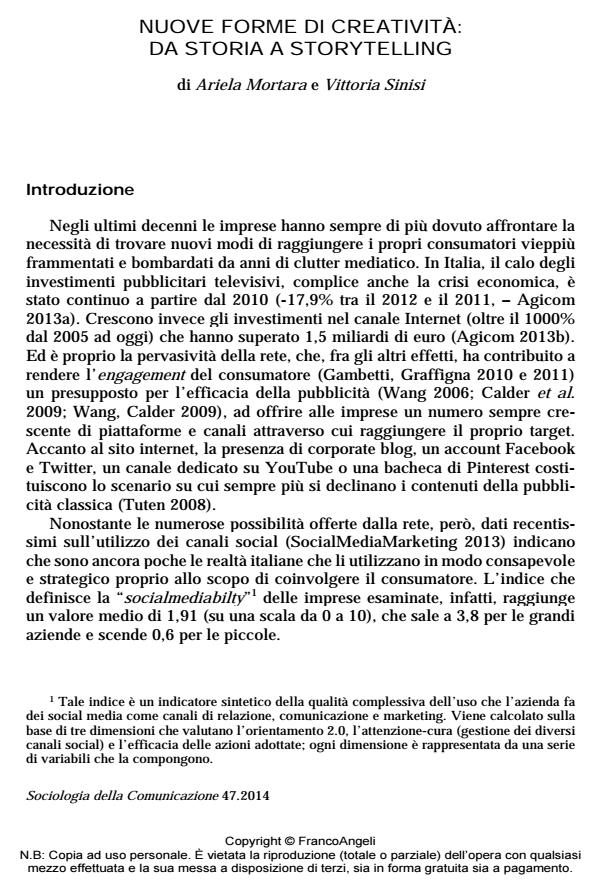Nuove forme di creatività: da storia a storytelling
Titolo Rivista SOCIOLOGIA DELLA COMUNICAZIONE
Autori/Curatori Ariela Mortara, Vittoria Sinisi
Anno di pubblicazione 2014 Fascicolo 2014/47
Lingua Italiano Numero pagine 14 P. 63-76 Dimensione file 65 KB
DOI 10.3280/SC2014-047006
Il DOI è il codice a barre della proprietà intellettuale: per saperne di più
clicca qui
Qui sotto puoi vedere in anteprima la prima pagina di questo articolo.
Se questo articolo ti interessa, lo puoi acquistare (e scaricare in formato pdf) seguendo le facili indicazioni per acquistare il download credit. Acquista Download Credits per scaricare questo Articolo in formato PDF

FrancoAngeli è membro della Publishers International Linking Association, Inc (PILA)associazione indipendente e non profit per facilitare (attraverso i servizi tecnologici implementati da CrossRef.org) l’accesso degli studiosi ai contenuti digitali nelle pubblicazioni professionali e scientifiche
Il paper analizza l’uso dello storytelling quale strumento strategico di brand communication nell’ambito nel nuovo scenario mediale proattivo e collaborativo del web 2.0. Lo studio si focalizza sulla classificazione diegetica di alcuni casi di brand storytelling nel tentativo di valutare le differenti finalità strategiche delle aziende in un’ottica di costruzione e gestione della marca. I risultati evidenziano tre ricorrenti categorie di brand storytelling che vanno dalla costruzione di un’epica della marca, alla condivisione e al consolidamento dei valori del brand, sino alla capacità di rendere proattivi gli utenti nel processo narrativo, favorendo così un maggior livello di engagement.
Parole chiave:Storytelling, branding, brand strategy, web 2.0, engagement, creatività.
Ariela Mortara, Vittoria Sinisi, Nuove forme di creatività: da storia a storytelling in "SOCIOLOGIA DELLA COMUNICAZIONE " 47/2014, pp 63-76, DOI: 10.3280/SC2014-047006